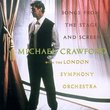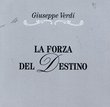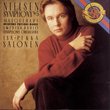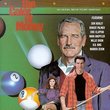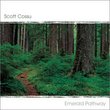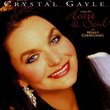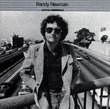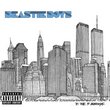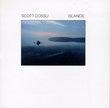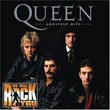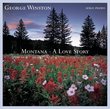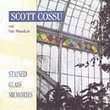| All Artists: Laurie Anderson Title: United States Live Members Wishing: 11 Total Copies: 0 Label: Warner Bros / Wea Release Date: 1/29/1991 Album Type: Box set, Live Genres: Alternative Rock, Special Interest, Pop, Rock Styles: Indie & Lo-Fi, American Alternative, Experimental Music, Progressive, Progressive Rock Number of Discs: 4 SwapaCD Credits: 4 UPCs: 075992519229, 075992519212, 075992519243 |
Search - Laurie Anderson :: United States Live
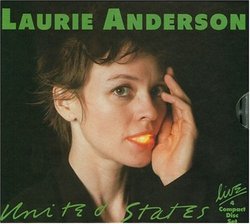 | Laurie Anderson United States Live Genres: Alternative Rock, Special Interest, Pop, Rock
For most musicians and groups, the live box set marks the culmination of a lengthy recording and concert career. Not so for Laurie Anderson, whose United States Live appeared in 1984, following her tenure in academic and b... more » |
Larger Image |
CD DetailsSynopsis
Amazon.com For most musicians and groups, the live box set marks the culmination of a lengthy recording and concert career. Not so for Laurie Anderson, whose United States Live appeared in 1984, following her tenure in academic and bohemian circles and a small handful of releases on Warner Bros. and smaller labels. The release was an unusual event, though perhaps less so for a musician who seeks to upend musical traditions, most notably the distinctions between pop and classical, spoken and sung, live and Memorex. The lengthy set is a recording of a live performance composed of dozens of carefully defined experiments in form and technique, most of them fitting into one or two of these three categories: show pieces for items from her technological music arsenal (like her emblematic electric violin), witty narrative snippets (back when "spoken word" was called "performance art," prior to the rise of the poetry slam), and full-band performances, featuring, among others, Peter Gordon and David Van Tieghem. "O Superman" and "Big Science" are the familiar titles that appear amid the nearly 80 tracks. "Just a slow accumulation of details," her computer-enhanced voice intones moments before the intro to "Blue Lagoon" (later heard in a studio version on Mister Heartbreak). That makes a nice epigram for the collection as a whole, which is essential to understanding art music of the '80s in general and the New York scene in particular. --Marc Weidenbaum Similar CDs
Similarly Requested CDs
|
CD ReviewsOverdue for digital remastering ChrisWN | Santa Cruz, CA | 07/01/2004 (4 out of 5 stars) "I remember seeing this performance series being advertised in The Village Voice & wanting desparately to go...but at 17, spending $35 + $20 round trip bus fare into NYC for each of the parts (and getting permission from mom to see a concert in Brooklyn by myself, as no other kid I knew was interested) made it out of the question. This missed concert opportunity has always been the one I've regretted most. So when the concert first appeared on vinyl, I didn't hesitate to shell out the $$$ for it. The LPs crammed quite a bit of time on to each side (I think there were as many LPs as there are cd's), and so the sound was very thin (you had to crank up the volume, making the pops & crackle very disruptive, deafening if listening on headphones). So, I upgraded to the cd box set a few years after having bought the vinyl. Contrary to another review, these recordings are from several different shows of the same piece "United States I - IV" which was a sort of anthology of the work Laurie Anderson had created up to February 1983 (when this performance series took place @ The Brooklyn Academy of Music). Many of the pieces are not available on any other recording, and that makes this box set essential. Her better known pieces are also presented in different (usually more sparsely instrumented) ways. The actual performance did also include visuals (projected video, laurie playing various "instruments" that she devised herself...). So you have to imagine what else was going on in each piece (audience laughter usually clues you into the fact that you are missing 1/2 of the performance). The sound quality of the cd's is a definite step up from the LPs. The cd's are louder without as much tape hiss. However, if you listen to the cd's on headphones, it is quite noticeable that the cd's were mastered from vinyl, which I've always found rather annoying (hence the deduction of a star), but the surface noise is quite a bit less noticeable than what had existed on my own vinyl copy. If there is any Laurie Anderson release that needs a digital remastering (24 bit/192 Khz) from the original tapes (and issued on SACD or DVD audio), this is it. With all the second rate artists doing the remaster thing, it is more than a bit disappointing that first rate artists on big labels (like Laurie, Philip Glass, etc..) still haven't remastered their back catalog using the latest technology to optimize sound quality (I don't care as much about 5.1 channels, as I do seeing that as much detail in the recording is available). It is really surprising that someone who was been at the vanguard in using technology in her music, has fallen so far behind others in using technology today. Now with Blu Ray discs capable of holding gigabits of info, the sound should not only be remastered, but the entire performance (visual too, which I do believe exists) should be put onto Blu Ray, so we can experience it in its full glory. However, until that day comes, this release is still highly recommended over any of her other recordings (except Big Science)." Have worn out the cassettes; time to buy the CDs J. Walker | Marietta, Ohio | 07/21/2002 (5 out of 5 stars) "I don't need to go into the finer points of the performance, or of LA's career, in this review; that has been done already (see John Bickelhaupt's review in this section for a great take on the essence of US Live). I will say that if you want an intellectual, complex snapshot of the political, social, economic, psychological and popular culture forces driving Americans in the 1980s, you need to listen to this album. LA captures with (oftentimes frightening) clarity what living in America -- especially urban America -- entailed during that period. However, don't think that her lens is trained only on the '80s; to sum up her approach using a lyric line from a later album (in my opinion her most accessible album, Strange Angels): "History is an angel being blown backward into the future." So much stands out here, so much that is dissected and yet left opaque so that, rather than pontificating, LA simply draws pictures of the landscape and steps back, allowing for multiple interpretations. Key favorites in the work for me include "Violin Solo" (haunting); "Yankee See" (in which LA takes the ironic turn and parodies her own performance -- it also says much about American consumer culture and, specifically, the state of modern art); "Dance of Electricity"; "Private Property" (remember Wm. Buckley??); and, of course, "O Superman." How can you not shudder and snicker simultaneously at the lines: "And when love is gone/there's always justice/and when justice is gone/there's always force/and when force is gone/there's always Mom/hi Mom!" Be warned: This is difficult music. This album forces you to look over the precipice into the abyss. That's what's so great about it. One final, unrelated note: Whenever you can, see her live performance. She could read from the phone book and make it powerful. Best performance I saw was the "Empty Places" tour (supporting the Strange Angels album). Sadly did not see the US Live performance. At least with the recording, you can live it in your head. I guess it goes back to polysemic interpretation again. Instead of ruing the lack of visuals, the discs draw out your own personal memories, visions and nightmares. p.s. Think about the time this was recorded (early '80s) and the technology LA used for this performance work. There's a current exhibit at the Cleveland Inst. of Art on video/audio works from 1964-1977 that raises an interesting technical question: How does this media hold up over time? What LA did in US Live, the exhaustive work that went into the technical aspects -- any powerful computer and the right software could produce similar results with less effort today. (Of course, it wouldn't have LA's stamp on it, but mine is a technical point, not an interpretive one). Will we look back in 20 years and say, 'Wow, to think that she built that digital processor from the ground up!'? Will it seem as spectacular? And, more importantly, will we stop critiquing the very machines and technology we use to create the art; in other words, will we lose the self-reflexivity that LA captures so well in US Live (note "Yankee See" in particular as an example)? Hopefully, artists like LA will keep us honest. Sorry for the rambling. Just go out and buy this; or, if you're a neophyte, start with her newest live album or the "Talk Normal" retrospective." Professor Anderson's American History 101 Lunatic Muse | El Paso, TX | 04/14/2000 (4 out of 5 stars) "One of the many qualities that separates Laurie Anderson from the sub-par pop world of the Backstreet Boys and Korn is her unerring intelligence, and it is on full display in the ambitious four CD box set entitled "United States Live". Taken from a series of shows at the Brooklyn Academy of Music, Anderson attempts nothing less than a cultural, historical and psychiatric dissection of America. Though this was probably much more interesting to watch (as it included the use of multimedia which is obviously incompatible with audio formating), the songs nevertheless work on a cerebral level, the likes of which have seldom, if ever, been duplicated. Utilizing her electronic violin, Harmonizer and toy saxophone (among other instruments), Anderson has concocted a tour de force of sound and expression. Admittedly, each of the 78 tracks available here are exceedingly intellectual and demand the listener's full attention; consequently, one cannot listen to this box set in one, five, or even ten sittings as though it were a simple collection of pop songs. The themes, multiple meanings and interior layers of each track unfold gradually with repeated listenings. It is also of note that a few of the songs included here can also be found on Anderson's first studio album, 1982's "Big Science". Personal Favorites: the history of Tesla's relationship with Einstein that accompanies the song "Dance of Electricity"; the philosophical musings on the nature of human motion found in "Walking and Falling"; the pseudo-Native American vocal rhythm of "Hey Ah". Representative Lyrics: "I can see the future and it's a place- about 70 miles East of here." ("Let X=X")"
|

 Track Listings (16) - Disc #1
Track Listings (16) - Disc #1